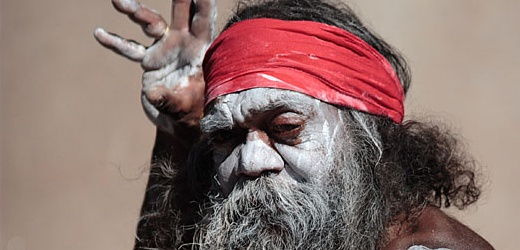In 1988 white Australians celebrated 200 years of colonization. They marked the event with a work of Aboriginal art designed by Aboriginal artist Michael Jagamara Nelson . The art work, a large mosaic was embedded in the pavement in front of the Houses of Parliament in Canberra. Like much of Nelson’s Aboriginal art it was based on a very traditional design from the Walpiri, a Central desert people, its shapes depicting a meeting place for ceremonies. The mosaic was essentially a work of public art following a familiar cultural path whereby important works of Aboriginal art have been the forerunner to the Aboriginal people furthering their political course.
Since 1988, Australia has seen a lot of change in race relations and public art, especially Aboriginal art has played an important role. Five years after the unveiling of Nelson’s Canberra art work he returned to the site and in the full glare of the world’s media he symbolically altered his bicentennial Aboriginal artwork by removing it’s central image, a set of concentric circles that depicted the meeting place. He said:
“White people. You don’t seem to understand. They look at my work, all they see is a pretty painting. You, the white people, took this country from us … White people must understand. This country is Aboriginal peoples’ homeland … We want to keep our culture strong for our children’s children. We cannot do this without our land be-cause it is our land, our dreamings, stories, paintings-all tied to our land. This has all been changed … The Government of Australia has not recognized our people and our culture, it is abusing my painting and insulting my people. I want to take my painting back to my people.”
A few months after Nelson’s protest the Australian parliament passed the Native Titles Act which granted land rights to Aboriginal families who could prove they had occupied their land through the generations. These rights were similar to those enjoyed by Native Americans and Canadians since colonization. Aboriginal art had played its part in these developments. In 1996 the Australian Governor General spoke of this in his Australia Day speech. He praised the redemptive powers of Aboriginal art and its ability to instruct other ethnic groups about the Aboriginal people and their homelands. Aboriginal art continues to play a significant part in the international art market.
